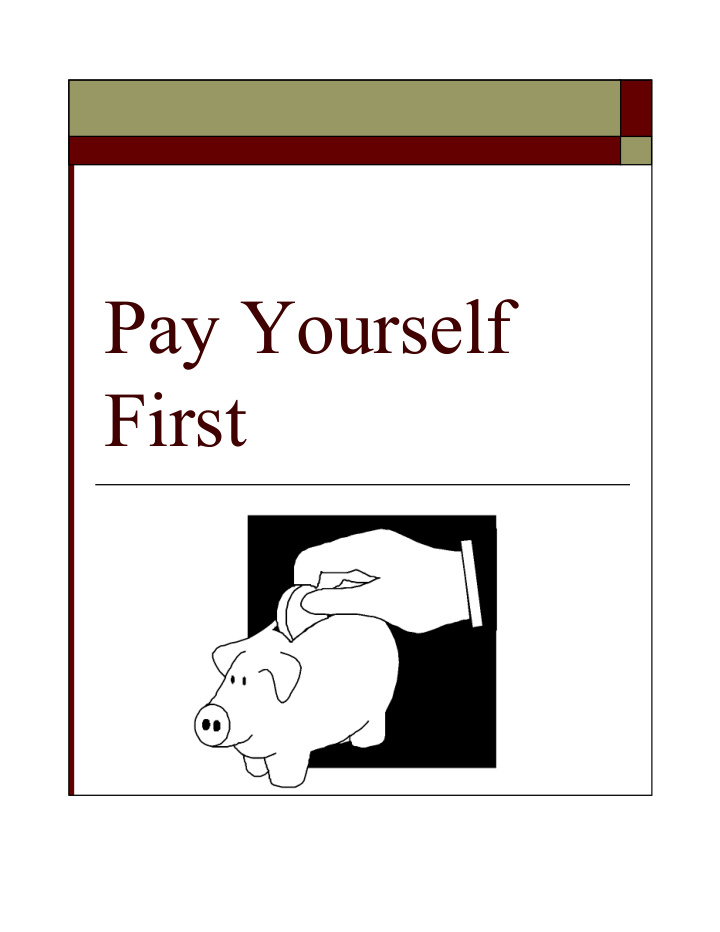



Pay Yourself First
You Will Know o Ways to save money o How money can grow o The difference between savings and investment accounts 2
Benefits of Paying Yourself First o Manage your money better o Increase your savings o Improve your standard of living 3
Saving Tips o Consider needs vs. wants o Direct deposit to savings o Pay your bills on time o Use a checking account vs. check-cashing stores o Save extra money from raises or bonuses o Keep making loan payments to yourself o Save cash gifts 4
Compound Dividends 5 Years 10 Years No Dividend $1,000 $1,000 Annual Compounding $1,276 $1,629 at 5% Monthly Compounding $1,283 $1,647 at 5% Daily Compounding at $1,284 $1,649 5% 5
Saving $1 a Day No 5% Daily Dividend Compounding Year 1 $365 $374 $1,825 $2,073 Year 5 Year 10 $3,650 $4,735 Year 30 $10,950 $25,415 6
Saving $5 a Day No 5% Daily Dividend Compounding Year 1 $1,825 $1,871 Year 5 $9,125 $10,366 Year 10 $18,250 $23,677 Year 30 $54,750 $127,077 7
Savings Accounts o Statement savings account o Passbook savings account o Club account o Money Market account o Certificate of Deposit (CD) o Share Certificate 8
Investments o Stocks o Bonds o Mutual Funds o Shares in a Credit Union 9
Retirement Investments o Individual Retirement Account (IRA) o 401(k) and 403(b) Plans o Keogh Plans and Simplified Employee Pension Plans 10
Decision Factors o How much do you want to accumulate? o How long can you leave your money invested? o How do you feel about risking your money? o Your shares in a federal credit union are insured by the U.S. Government. 11
Recommend
More recommend